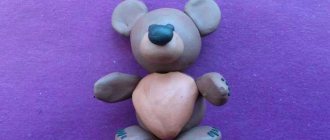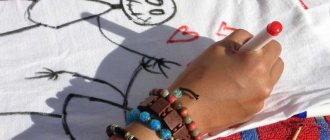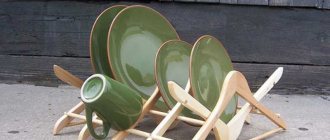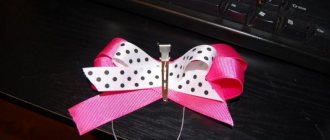What to consider when making
Before choosing a scheme and method for making a scratching post, you need to take into account, calculate, decide in advance on the size of the product, shape, what material to choose, place for placement and the further possibility of repairing the scratching post.
Size matters
The principle here is that the more, the better. The design should not be smaller than a cat. Even if you do a fight for a kitten, it should still be high, because the baby will soon grow up. A cat will simply not be interested in or comfortable with a small scratcher, because she likes to reach higher and further away.
If a floor structure is planned, the animal must fit completely on it (with front and hind legs). If it’s a vertical post or wall, make such a calculation so that the cat can accurately reach with its front paws and still have a little space left.
Base material
When choosing a material, it is better to give preference to natural wood or cardboard. These are soft enough materials that your pet won’t be able to injure their claws when sharpening. But it is permissible to use chipboard, fiberboard, and plastic sewer pipes, especially when it comes to the construction of an entire play complex.
Coating and winding material
For covering scratching posts, carpet and carpet fabric have the best qualities. It is recommended to purchase carpet for home use only. Office ones, as well as very cheap ones, are made on a rubber basis, can smell unpleasant, and be unsafe for the animal.
It is better not to use artificial fur or fabric, as they are short-lived, and fur tends to accumulate static electricity. The cat will be afraid of this design.
Jute (hemp) rope is made from industrial hemp, so it is safe for your pet even if swallowed.
Also, its advantages are that it is cheap, soft, and a good option for kittens. Disadvantages - when used, debris flies from jute, as it peels off into fibers. I'll have to clean more often.
Sisal rope is also made from a plant base (agave) and is not harmful to the animal. It is strong, but, like jute, it leaves behind debris. Another disadvantage of sisal is that during use by a cat, the scratching post can sag and become wet.
Cotton rope is also used to make scratching posts. It is reliable, safe, and due to the white color of the rope it gives the product more aesthetics.
Which of the presented options is better, each owner decides for himself.
Installation type and shape
Determined based on the size of the apartment and the availability of free space. Because you can make a nail sharpener in the form of a column or a floor-mounted horizontal one, or you can mount it on the corner of a wall.
Form – the simpler the better. The fewer corners and protrusions, the less the risk that the cat will damage its claws. This design is easier to repair when the coating fails.
Advantages and disadvantages of homemade scratching posts
The only disadvantage of a homemade sharpener is the time spent on its manufacture. Purchasing consumables and tools does not count, because if you buy a finished product, you will probably pay more. Just by making the sharpener yourself, you will have at your disposal a completely safe, environmentally friendly product that is most suitable for your pet.
Store-bought scratching posts, even with the most primitive design, are usually not very cheap. Moreover, such an object may not be to the liking of a four-legged animal, and the animal will simply ignore it.
A store-bought accessory may not smell like that, especially if plastic and synthetics were used in its manufacture. As a result, you will waste money, and the problem of damaged furniture will remain unresolved. When you make a scratching post yourself, you will be able to take into account the preferences and tastes of your pet.
Cardboard rectangular scratching post
With a rectangular or square option, the operating principle is the same:
- Cut cardboard strips of the same width and length depending on the desired size of the future scratching post.
- Make the base also from cardboard or use a ready-made box, then adjust the strips to its size.
- Glue each strip using a heat gun or other reliable glue, then lay tightly in a row next to the other until the box is completely filled.
- This design can be placed on the floor or fixed to the wall using double-sided tape. To do this, wide strips of tape are glued to the bottom of the box at the top and bottom, then the structure is attached to the desired location.
You can sprinkle catnip on the bottom (under the cardboard strips) or put a piece of fabric soaked in it.
Constructions
Columns with platforms
Arrangement of a wooden scratching post with a bed
How a wooden scratching post with a bed is arranged can be seen in Fig. on right. The base is covered with fabric in advance; the bed - after installation in place. It is advisable to place batting or synthetic padding under the skin of the bed so that the cat does not feel the metal at all.
The first turn of the winding is glued with PVA, secured with tape and winding is carried out when the glue has dried. Another 2-3 turns are glued along the winding, as well as the last 2-3. They are also secured with tape before drying. There is no need to glue all the turns, so that it is easier to change the winding as it breaks, sorry, wears out.
Note: in a wooden climbing post with intermediate platforms, they are cut into the post already covered with fabric. Grooves are selected in the column with a margin for fabric; the platforms are attached with glue and self-tapping screws, wrapped through the post into the edges of the platforms. The fastener preparations will be hidden under the winding.
It would be easier to make a scratching post with a bed and a viewing platform using cardboard pipes. The diagram of its device is given in pos. I fig. below.
The assembly of the scratching post on cardboard poles is carried out in stages as follows:
- Holes in the base (1) for the posts are made with a feather drill or cut out with a jigsaw. No special precision is required, but an allowance of approx. 1 mm under the fabric.
- The base is covered with fabric in advance.
- After the glue dries, the fabric above the holes is cut with wedges, wrapped inside and on the underside with glue, as described above.
- Pipes (2) and (3) are also inserted with glue and immediately secured from the inside with small, 1.5-2.5 mm, self-tapping screws (4), 3-4 pieces each. onto the pipe evenly around the circumference. The installation holes for the screws are pricked with an awl.
- The bed (5) is first placed without covering, secured with self-tapping screws on a short pipe and set horizontally.
- On a long pipe, the bed is secured with a pin (pin) made of bamboo or hard wood (6) with glue. Pin diameter – approx. 3 mm; the hole for it, 0.5-0.7 mm narrower, will have to be drilled right through.
- The short pipe is plugged with a plug (7) made of dense foam plastic, soft wood, polyurethane foam, etc.
- Cover the bed with fabric (8). The hole in the pattern for the long post is cut out in advance.
- Into the joints (A) and (B) 3-4 drops of PVA diluted with 30-50% water are added evenly around the circumference.
- The observation platform (9) is installed in a similar way.
- Wrap the pillars with rope (10).
Note: on pos. II and III show how to form a kink in a cardboard pillar.
Corner
A corner scratching post is good, first of all, because it can cover a corner already favored by the animal: there is no need for repairs and making the cat new, which in this case is not always possible. Angles for cats, as mentioned above, are especially significant. It may be impossible to discourage, especially a cat, from a corner and off a pole or some type of plane (see below).
Corner scratching posts for cats
The main types of corner scratching posts are shown in the photo. The simplest one is a scratching post-book, 2 boards wrapped in rope, pos. 1, and connected by a hinge made of a strip of textile. The turns of the winding are most often all glued together; then, when the outer side is torn off, you can turn the scratching post with the “fresh” sides out. The ends of the boards before the wrapping are covered with fleecy or woolly, “catchy” fabric so that the cat can clean the claws on 3 paws while holding on to one.
The fact is that you can’t lower a simple corner scratching post to the floor: it interferes with cleaning and gets dirty. Cats, as you know, are clean. They will ignore the dirty cleaner and go scratch something else. Therefore, it is generally inconvenient for them to tear their claws on scratching posts, pos. 2, and not every cat accepts this product. You might even get nervous that your favorite corner is closed.
Corner attached scratching posts, pos. 3 and 4. The side ensures the cleanliness of the cleaner, and the owners can move it away during cleaning. However, to make an attached corner scratching post you will have to do a lot of work, see for example. video - master class below. However, the work can be simplified by building a corner attached scratching post from cardboard tubes and plywood, pos. 5.
Video: do-it-yourself corner scratching post for a cat
A special case is a corner wooden scratching post not in the corner, pos. 6. It will help to avoid many problems if several, up to 4, cats that do not form a pride live in a rather cramped room. Each has its own corner for pulling claws, and all together is a kind of border post.
Wall mounted
Sometimes cats, ignoring corners, tear at walls and it’s impossible to get them to use a normal scratching post. This is generally not typical for the cat breed, but it is not a pathology: in this case, it will be cheaper and easier to make a scratching post for a cat on the wall than to run to veterinarians and animal psychologists. But covering only the immediately scratched area with a small board with a cleaner, on the left in the figure, is wrong. Someday you will need to tear out your hind legs, and then there will be wallpaper, baseboards, and carpet. The cleaning surface of a wall-mounted scratching post should be no more than 12-17 cm from the floor so that the cat can reach it with its back paw, in the center. The ideal option, of course, is a wall-mounted scratching post with a bed on the right, but due to the presence of bent wooden parts, this is already a rather complex carpentry product.
Wall-mounted scratching posts for cats
Floor-standing
There are cats, and entire breeds of them, that don’t like not only to climb, but also to rear up. Persians, for example. Most likely, this is due to admixture in the gene pool from steppe cats; There are some among them who would rather drive a dog up a tree than climb it themselves. In this case, the cat needs a floor scratching post. This is basically the same board wrapped with rope, but with an emphasis on one edge, pos. 1 in Fig., so that you can practice claws while lying around for your own pleasure. Support/strut (position 2) – worse, with the hind legs it’s more difficult.
Floor scratching posts for cats
Some branded floor scratching posts for lazy cats are produced like the one in pos. 3. But this is pure marketing: on the rollers for the front paws, the claws often tear. Much more convenient and safer is the wave scratching post, pos. 4. It will suit both kittens and adults.
Cardboard
Container cardboard is a readily available material. Even a completely ignorant kitten can scratch its claws on it at random without the risk of damaging them. But adult cardboard scratching posts are only suitable for cats of small, weak breeds. A street scumbag who has been awarded a promotion for his good behavior will not clean his claws properly on cardboard, and will have to upset his owners by returning to street habits. By the way, not all small cats are weak. Try holding a Siamese or Abyssinian in your hands if she doesn’t want to.
Scratching posts for cats made of cardboard
The technology for making a cardboard scratching post is quite labor-intensive, but simple: strips or blanks are glued together in rows, pos. 1 in Fig., or spiral, pos. 2. In this way, sometimes very elegant products are obtained, pos. 3. It’s also easy to glue a wave scratching post from cardboard, pos. 5, or corner, attached or separate demarcation, pos. 6.
There are cardboard scratching posts on sale; most often - pillars of various configurations, pos. 4. Branded animal psychologists assure that there is some kind of cat sense in them, but the animals do not confirm this with their preferences, they would tear their claws, and that’s all.
House with a sharpener
A special kind of special type is the scratching post-house, see fig. You can accustom a cat to it only if it was adopted as a very young kitten. In this case, the conditioned reflexes acquired in safe human housing are able to prevail over the instinct for the safety of the lair, which has weakened there. Attempts by owners of this kind are justified if they take the cat to the dacha for a long time in the summer or, say, with them on vacation. The cat scratching post house is compact, lightweight, and does not cause any complaints from customs officers. And a cat in a familiar abode will not run wild and will not fall into hysterics in a strange environment.
Houses with scratching posts for cats
Wooden scratching post
Essentially, a cat scratching post is a piece of carpet attached to a wooden or cardboard post. Therefore, making it at home is not difficult.
You will need:
- A piece of carpet or carpet to cover a wooden post and base.
- Wooden pillar.
- Drill.
- Glue or staple gun.
- Hammer.
- Screws – 2 pcs. 7-8 cm in length.
- Paper knife or scissors.
Wooden products can be purchased at a hardware store.
It is better to choose a pole longer than the cat; the width of each side, if it is square, is at least 10 cm. The base (round, square, rectangular platform) must be heavy enough so that the animal does not tip over the structure. It is better to use a carpet without loop pile - it will quickly fail. Step by step manufacturing steps:
- The structure will be held in place by 2 screws that will go through the platform and into the post. Mark marks for the holes in the wooden beam with a pencil. Then place marks on the base at the same distance. It turns out that if the holes for the screws on the block are at a distance of 5 cm, then they should be at the same distance on the base.
- Drill 2 holes in the base for screws.
- Glue or staple the carpet to the post. Gluing is more difficult, as the carpet will jump off and not lie flat. When working with a stapler, you need to take into account when the post will stand vertically so that the staples are also positioned vertically. This way there is less risk that the cat will damage the claw.
- Then wrap the other side with carpet and also secure with a stapler. The post needs to be wrapped as tightly as possible. Trim off the excess with a knife and secure with staples. Be sure to hit the staples with a hammer to make them flatter. The scratching post area can be covered with carpet, but if it is well sanded and free of splinters, it can be left as is.
- Screw the screws into the base, place the post on them and continue screwing until the head rests on the wood.
What should I scratch my claws on?
The base of the claw cleaner can be anything strong enough; We will return to this issue later. Much more important is the “abrasive” itself: the cat’s scratching post must be strong enough to remove the keratinized layers, but not excessively, so as not to damage the living tissues of the claw.
For the same purpose, the material of the cleaning surface should be fibrous and moderately rough, not too fine, but not too rough. To prevent the claw from getting stuck and tangled in it, the tensile strength of the fibers of the material should be lower than that of the “plastic” of the claw, but again, not excessively, otherwise nothing will peel off on it. Finally, cats sense electricity. Not nearly as subtle as fish, but they still feel it. Therefore, claw cleaning material should allow static electricity to flow away, but should not be highly electrically conductive. These requirements are fully satisfied by natural materials:
- Wood, but not all wood, see below.
- Hemp hemp and woven/twisted products made from it: burlap, carpet bases, ropes, ropes.
- Jute hemp and the same products made from it, plus coarse furniture fabrics.
- Braided coarse wool products: drape, tapestry, old greatcoat cloth or green cloth for gambling tables.
- Packaging corrugated cardboard – for kittens and small weak decorative breeds
Synthetics of any type are not suitable: their fibers are too tensile, but at the same time too smooth and slippery. As well as sisal and manila hemp fibers. The cotton fibers are very weak, the cat will tear them, but will not clean the claws properly.
Note: metal and plastic fastening/supporting parts in the scratching post (see figure) accessible to the animal should be avoided if possible - metal instantly removes static, which is unpleasant for the cat, while plastic, on the contrary, accumulates it itself. In addition, both of them can tear your claws.
Incorrect use of metal in a cat scratching post
Tree
A wooden scratching post is most suitable for a cat: he is the original owner and protector of his site. He needs his claws not only for hunting weak prey; the cat must be ready at any moment to enter into battle with an equal or even stronger person. Therefore, cats' claws are renewed more slowly than those of cats, but are more durable. The tree for the cat’s scratching post should be a strong, absolutely healthy, straight-grained one. Birch is suitable for deciduous trees; their conifers - everything except spruce. In any case, the wood must be well exposed to air and light (and not in the shade, as is sometimes written) so that its fragile viscous volatile (and odorous) components are completely weathered or bituminized; At the same time, the tree turns gray, and in conifers the layering clearly appears. Look at the picture: such a serious man won’t scratch his claws on anything. Yellow plaque is nothing, it’s a lichen, harmless and safe.
Wood suitable for cat claw point
The second condition is that the wooden scratching post must have a straight-layer section free of knots with a height no less than the height of the animal without a tail. It is on this that the cat will tidy up its claws. It is best to start from the floor or bed to make it easier to tear the back claws. Product on item 1 Fig. Suitable for kittens who do not yet know how to climb properly, but as they grow older, they will begin to look closely at baseboards, wallpaper and furniture. But what’s in pos. 2, suitable for a cat of any age, does not require purchased material and is compact enough for installation in an apartment.
Wooden cat scratching posts
Smooth-haired cats are generally energetic, tenacious, and willing to climb. A wooden scratching post for them can be made from fairly thin branches with bark, pos. 3. Long-haired dogs are more phlegmatic and are not particularly good at climbing, so the wooden piece needs to be wrapped in rope (positions 4 and 5). A thick branch, partially wrapped, is suitable for both, pos. 6.
Carpet scratch board
You can quickly and easily make your own carpet scratching post. To do this you will need:
- Wooden board or piece of chipboard.
- A piece of carpet or old carpet.
- Nails.
- Hammer.
The size of the wooden canvas is selected based on the size of the cat, because the structure made can be used as a bed and as a claw sharpener.
How to make a nail clipper:
- Place the rug with the wrong side up.
- Stepping back from the edge of the carpet, place the board.
- Wrap part of the carpet over the board and secure with nails along the entire edge.
- Carry out the same actions with the second part of the carpet. If the two layers overlap, they can be cut off with a knife or left as this will create an extra springy feel for the cat.
For the cat to start using the scratching post, just turn it over to the other side. If a fairly heavy tree is chosen for the scratcher, then it may not be secured, and the cat will still not turn it over.
Materials used
Making a scratching post with your own hands using step-by-step instructions is not that difficult. The main thing here is to use natural materials, because the sense of smell in four-legged animals is much more sensitive than in humans. Take materials that do not emit too pronounced and strong odor. For example, wood, jute or linen ropes, burlap, cardboard and the like. Natural fibers are very good at eliminating static electricity.
Artificially created materials can provoke an allergic reaction in a pet, which can have serious consequences. Forget about plastic - it is, in fact, an allergen, and even with an unpleasant odor.
The surface of the sharpener should be rough, but not very hard. It is important to pay attention to the strength and reliability of the product. And of course, safety, so that there are no broken claws or other injuries.
Scratching post with sisal
Another simple way to make a scratching post from wood, a piece of rope and carpet.
To make a cat scratching post, you will need:
- Square base made of wood or chipboard.
- Wooden pillar.
- A piece of old carpet or rug.
- Sisal rope.
- Carpet adhesive or stapler, staples.
- Screwdriver, drill, saw.
Sequencing:
- Prepare the base. To do this you will need a saw to get the required dimensions. Sand the edges so that no sharp parts stick out.
- Do the same with the post - if necessary, shorten it with a saw and sand it.
- In the center of the base, determine 2 or 4 points where the screws will be inserted. It's simple: draw 2 lines from one corner to the opposite. At the place where they intersect, install a pillar and trace its diameter with a simple pencil. Mark 2 (4) points for drilling in the center of the circle.
- Drill holes in the base for further insertion of screws.
- Then the holes need to be drilled in the post. In order not to accurately measure with a ruler, you can do it simpler: turn the post over, firmly place the base on it (you will need the help of a second person for this) and drill along the existing holes.
- Glue the carpet to the base. After the glue has dried, turn the base over and use a cardboard cutter to trim off any excess carpet.
- The next step is to wrap the post with sisal. You need to start from the bottom, gradually rising to the top. The beginning of the rope will need to be secured with glue. Then wrap the rope tightly around the post and periodically fix it with glue for a tighter fit. Apply glue at the very top and also lay the rope in a circle. Cut off the tip, glue tightly in src=”https://68koshek.ru/wp-content/uploads/2021/02/namatyvanie-verevki-na-stolb.jpg” class=”aligncenter” width=”580″ height=” 413″[/img]
- Connect the base and the post by screwing in the screws with a screwdriver.
- For better stability, so that the screws do not protrude onto the side that is in contact with the floor, glue a rubberized backing and cut a piece in the area of the screws so that they do not come into contact with the floor.
You can also attach pompoms to this setup with a strong thread. The kitty will be able not only to sharpen her claws, but also to play. As the rope wears out, it is easy to carry out repairs and re-install a new one.
If there is not enough space in the apartment, the easiest option is to wrap a rope, jute cord, sisal around a table leg or part of some other furniture.
Paper strip claws
Bend a rectangular strip of paper with an aspect ratio of at least 1:3 - 1:4 into an even pentagon. Fold it in half and mark a diagonal from the bottom corner to the top. Place the side that protrudes more towards it and fold the part in half again. Place the small edge into the large pocket to form a claw. Ready!
Photo: xeonix.ru
Wall-mounted scratching post for upholstered furniture
This model is especially for a cat who does not want to change his favorite sofa for anything else.
You will need 3 wooden boards. One is for wrapping with sisal rope, the second is slightly wider in size than the sofa armrest, the third will hang from the inside of the sofa as a retainer. In general terms, the design resembles the letter G and is hung on the side back of the sofa.
Small claws on the phalanges of the fingers
Take a paper square, fold it diagonally and make a fold in the middle of the resulting triangle. Fold back the top corners and lay them back to make the claw easier to shape onto your finger. Finally, fold the bottom of the triangle to the fold line and roll the figure into a ring, inserting the protruding corners into one another.
Photo: miazar.ru
Corner scratching post
The simplest option for a corner claw is to cover the corner of a doorway or wall with a piece of carpet.
Another option is to build 2 flat poles of the same size and attach them to the corner on both sides.
Would need:
- Jute rope
- 2 boards identical in width, thickness, length. Wooden boards, chipboards, and wall panels are suitable.
- Drill.
- Screws.
- Glue.
Mark holes for screws in each board. Then wrap it tightly with a rope secured with glue and screw the boards at the desired height into the chosen location.
A more thorough approach to making a corner fight in a video story
A4 paper claws
Divide a regular sheet of A4 paper into a square and an elongated rectangle. It is not necessary to draw the stripes with a pencil - you can just mark them visually. Fold the corner of the square diagonally to this line and fold it again into a triangle. Fold the top and bottom corners to the same line to create a trapezoid on the right.
Fold the workpiece in half twice, unfold the last fold and place the lower part towards it with the tip. Repeat the same on the other side so that you get a cone-cup. Fold one or both protruding edges inward so that the paper claw holds its shape better and sits firmly on the finger.
Photo: ezidri-market.ru
New Year's paper crafts for children (50 photos)
Travel scratching post
If you often have to travel somewhere with your cat, it is advisable to take her favorite accessory for entertainment and exercise on the road. In addition, such a mobile hanging scratching post can also be used at home on an ongoing basis.
You will need:
- A rectangular board or sheet of plywood.
- Rope (rope, jute, sisal).
- Glue.
- Drill.
- Scissors.
Make 2 holes in the board, into which then thread a rope for hanging.
Wrap the board tightly with rope, gluing it periodically. Also fix the ends with glue.
With or without claws?
Is it possible to do something with the cat to prevent it from scratching? Veterinarians know 8 or 9 ways to deprive her of this opportunity. But after the most “humane” of them, the animal will feel like a child playing with tightly bandaged hands or walking in a straitjacket. Impacts of “moderate severity” will cause sensations in the animal approximately the same as filling a carious tooth without painkillers in a person, and they will have to be used regularly: cat’s claws are constantly growing. And “radical” methods generally smack of fanaticism and leave the animal disabled.
How to draw a cat's attention to a scratching post
Placing a scratching post in a certain place is not enough for the cat to pay attention to it. Your cat may need to be trained to use a scratching machine.
Some tips:
- Observe where the cat most often settled down to sharpen its claws and, if possible, install a scratching post nearby.
- Show him the “right” behavior. To do this, bring the cat to the scratching post, place its front paws on it, lightly pressing on the center so that the cat releases its claws.
- Be sure to praise your pet. Give a treat, but never scold.
To attract a kitten or adult cat to the scratching machine, you can use catnip. The product is sold in pharmacies and pet stores in the form of dry herbs, sprays, and infusions. Some furry owners use valerian, but it is better not to use this method. Since valerian can have completely unexpected effects on cats.
Deciding on shapes and sizes
If your pet is large enough, then the sharpener should match its size. When creating a product, you first need to focus on the dimensions of the cat. Especially when you are making a wall model, otherwise the animal may scratch the wall.
The length of the scratching post should be 5-10 centimeters greater than the length of the animal itself (the tail does not need to be taken into account). The width of the product is oriented towards the width of the outstretched paws.
It’s not a bad idea to make a scratching post with a bed, if, of course, the dimensions of your home allow it.
Freddy Krueger's Claws
Quite a vivid and interesting example of a character who inspired horror in children. Interestingly, the claws can be used as decoration for a Halloween costume or for role-playing games.
It doesn’t take long to make them, and with a flight of fancy there are no restrictions on color and materials. The claws can be made of a thick layer of paper on top of foil, then they will be quite dense and durable, which will allow you to play without fear of damaging them.
Note: For additional strength, you can cover your claws with tape!
We offer instructions for origami Freddy Krueger's claws step by step.
For production we need a standard sheet of paper. We make a basic square blank by folding one edge of the sheet. We do not cut or tear off anything. The claw will be made exactly according to this paper format. Next, we turn the workpiece over and compare the sharp tip with the accompanying horizontal line.
Thus, we get an irregularly shaped pentagon. Where one is strictly correct, at 90 degrees, and the other is a broken angle. Now we bend the edge with a broken angle towards the center of the overall workpiece to form a regular square with identical sides.
We turn the workpiece over, turn away the inner side of the sheet and make a curved end from the triangular base. Now, according to the creator’s wishes, all that remains is to bend the pocket or leave it altogether. In particular, a long, non-curved corner will be more comfortable for small and narrow fingers. For those who have thicker fingers, it is better to fold the edge, so the claw will sit more tightly in place.
DIY scratching post repair
Most often, owners have to deal with the restoration of fabric and rope structural elements:
- It is better to completely remove the weak and thin cord from the vertical posts and replace it with jute rope.
- Damaged fabric upholstery is replaced with new one.
- Scratching posts made of corrugated cardboard are not worth repairing - they are simply thrown away and the next one is made.
- With wooden houses you have to tinker - you need to disassemble the entire structure, correct defects and fasten it back together. But if the project was originally completed with high quality, then no significant troubles can happen to it.
Claw houses cause trouble only in one case - if they are assembled with self-tapping screws, without corners or slats. Large cats weaken the structure and it quickly fails.
Types of paper claws
The origami technique allows you to expand the range of paper claws. It can be:
- short or long claws;
- claws of a demon, lynx or dragon, vampire;
- claws - easy origami, or more complex in execution;
- claws worn on fingers or attached to gloves.
The modern accessory market offers a wide range of animal claws that are “endowed with magical powers.” It has long been believed that the strength and spirit of an animal is concentrated at the tip of its claws. Such amulets bring good luck.
Let handmade crafts - origami with animal claws - also bring prosperity and happiness.











